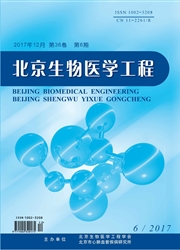

 中文摘要:
中文摘要:
目的 走罐是中医治疗系统中一种非药物治疗手段.痧象是走罐后在背部显现的图像,含有很多疾病的信息,患者的证型就是其中一种.本文主要完成3种痤疮痧象证型的自动分类.方法 首先分析中医走罐后,背部痤疮痧象图像的特点,然后对7个穴位模块提取Tamura纹理特征,同时针对背部整体痧象图像提取Tamura纹理特征和颜色特征,再通过支持向量机分类方法进行分类.结果 提取的痧象特征可以较好地完成湿热、心火炽盛、脾气虚三种痧象证型的自动分类.结论 痤疮痧象自动分类具有可行性,为中医客观诊断和验证打下初步基础.
 英文摘要:
英文摘要:
Objective Cupping is a non-drug treatment in traditional Chinese medicine (TCM) treatment system.Sha image appears on the back after cupping and contains information of many diseases,such as the syndrome of the patient.This paper mainly completes the automatic classification of three Sha images of acne syndrome.Methods The Sha image feature of acne syndrome on the human body back after cupping treatment is analyzed,and Tamura texture feature is extracted from the module of seven acupoints,meanwhile Tamura texture features and color features are extracted from the whole picture of Sha image,and then support vector machine (SVM) is used for classification.Results We can perform the automatic classification of three kinds of blood stasis-damp-heat,exuberance of heat fire and qi deficiency through the extracted feature of Sha image.Conclusions The feasibility of automatic classification for Sha images of acne syndrome is demonstrated,which paves the way for the objective diagnosis and verification of TCM.
 同期刊论文项目
同期刊论文项目
 同项目期刊论文
同项目期刊论文
 期刊信息
期刊信息
